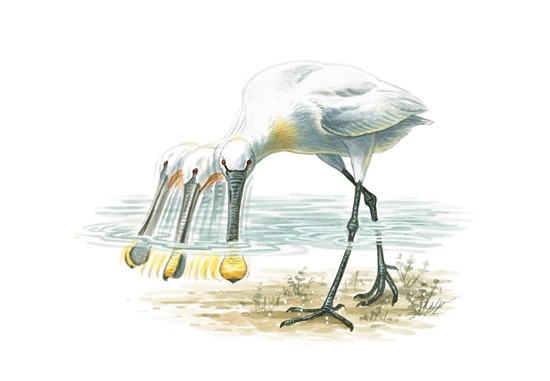
1 - Eat soup
2 - Row a boat
3 - Play tennis (sort of)
4 - Wedge a door open
5 - Prize a fence rail off (it might break)
6 - Throw a small pancake
7 - Remove a bicycle tyre
8 - Keep some loose screws
9 - Put loads of sugar in a cup of tea
10 - Easily win an egg and spoon race
Of course all these would require removing the bill from the bird, which we would never want to do.
So we should just marvel as…